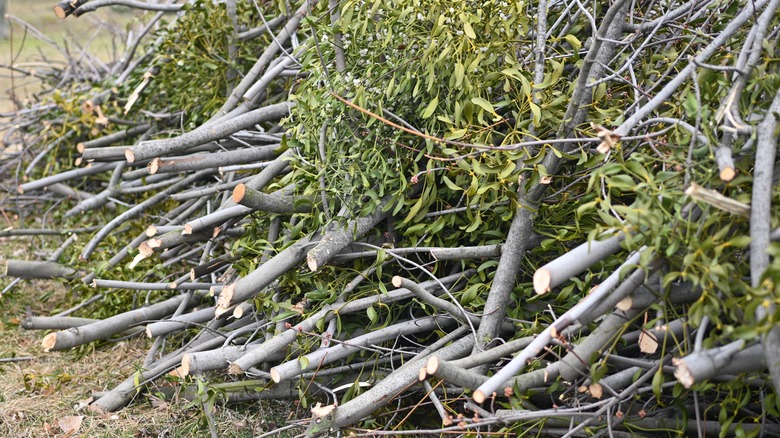Save Your Tree Trimmings To Make New Garden Beds Using An Easy, Natural Method
Next time you're out in the yard trimming trees, don't just toss those branches in the compost or haul them to the curb. Those tree trimmings can help you create a new raised garden bed with minimal effort, using an old but genius method called hugelkultur. And here's the best part—you don't need fancy tools or materials. All you need are the natural resources already in your yard.
Now, if "hugelkultur" sounds a little intimidating, don't worry. It's just a fancy way of saying "mound culture," and it's all about building a raised garden bed from decomposing organic material, with tree trimmings forming the foundation. This technique mimics nature, where fallen trees slowly break down in forests, feeding the soil as they go. Hugelkultur takes advantage of that natural process by creating a self-sustaining bed that benefits your garden for years.
Tree trimmings are perfect for the base because they hold moisture like a sponge. As the wood breaks down, it soaks up rainwater, gradually releasing it back into the soil. That means less watering for you and a steady supply of moisture for your plants, even during dry spells. Plus, as the branches decompose, they enrich the garden soil with additional nutrients, providing your plants with a better chance to thrive.
Start your hugelkultur garden bed with tree trimmings
The first step is to pick the perfect spot in your yard. You'll want an area that gets plenty of sunlight and has enough space for a raised bed. Once you've chosen the spot, mark out the size of your garden bed and dig a shallow trench about a foot deep. This is where your tree trimmings will go.
Next, gather your tree trimmings. You can use pine, oak, maple, apple, birch, and most softwoods for hugelkultur beds. But avoid using allelopathic or rot-resistant woods such as cedar, black walnut, and black locust. Lay the larger pieces of wood in the bottom of your trench and pile smaller branches and twigs on top. The idea is to create a mound that's at least 2 feet high. Don't worry if it looks tall; it will settle as the wood decomposes over time.
Once you have your tree trimmings in place, it's time to add layers. On top of the wood, pile on other organic materials like leaves, grass clippings, straw, and even compost if you have some on hand. These layers will help speed up the decomposition process and add even more nutrients to your garden bed. After that, cover everything with a thick layer of topsoil. About 6 inches of soil should do the trick, as this is where your plants' roots will grow. Now, your hugelkultur bed is ready for planting vegetables, herbs, and flowers. As the tree trimmings and other organic materials break down, they'll improve the soil quality, keeping it loose and full of nutrients.

